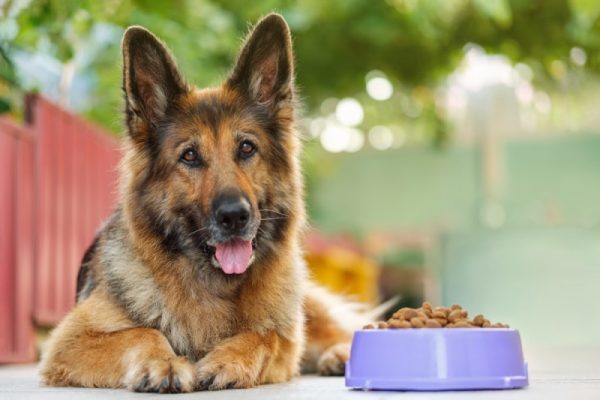In this article
View 4 More +The Newfoundland or “Newfie” is the epitome of a “gentle giant” and is loved for its docile and friendly nature. Their coat is dense and soft, which gives them an appearance of a large plush-like toy, and it also comes in beautiful colors and patterns, which add to their overall majestic appearance. When choosing a Newfoundland as a companion, the coat will likely be a deciding factor. Every Newfie coat is stunning, and we talk about them all in this article to help get you acquainted with them all.

A Newfoundland’s Coat
Apart from their immense size, Newfoundland can also be recognized by their amazing, plush coat. Their double coat is water-resistant, which is great for this water-loving dog. They have an outer coat that is dense, long, and can be wavy or straight, while the undercoat is soft and less dense during the warmer months. The fur on their muzzle and their face is short and fine, while their legs are feathered all the way down and their tails are long and dense.
When it comes to their coat colors, recognized colors by the American Kennel Club include black, brown, gray, and white and black (Landseer). However, this gorgeous breed can also be found in beige, black and tan, and white and brown, but they are not the breed standard.

The 8 Newfoundland Dog Colors & Patterns
1. Black

The most common Newfound dog color is black, which is the breed standard in most countries. This shiny, solid coat color adds to the powerful nature of the dog and is one of the most striking coats.
2. Brown

The brown coat is also a recognized standard for Newfoundland and is striking with its deep, chocolatey hue. Along with its size, a brown coat can easily give a Newfie the appearance of a large, fluffy teddy bear! They are not as common as black Newfies, which is unfortunate as they are truly beautiful.
3. Gray

Gray is a rarer color but is recognized as the breed standard in most countries. The unique silver-gray coat is a more diluted black and can be lighter or darker depending on their genetics. The gray coat is highly sought after, and because it is rare, the price is significantly higher than other coat colors.
4. Beige
A beige coat is essentially a diluted brown coat, also called champagne or cream, but is beautiful on a Newfie. This is a rare Newfoundland dog color and is not recognized as the breed standard in any country.
5. White and Black-Landseer
The white and black coat or Landseer coat is a white base coat with black markings and black ears. Their saddle and rump area is also often black. The head is typically black and can include white ticks, a white muzzle, and in some cases, a white blaze on the head. The black markings differ on every Newfie, so no two Landseer Newfies will look the same.
6. Black and Tan

The black and tan Newfoundland can look very similar to a St Bernard and is considered by some to be a tri-colored coat. Their base coat will be black with tan markings on their tail, legs, chest, and face, often with some white patches in the same areas. While this is a beautiful coat on a Newfie, it is not recognized as a breed standard.
7. White and Brown

The white and brown coat is essentially a white base with chocolate brown patches around its body, which will also differ for each dog. This beautiful coat is another one not accepted by the AKC.
8. Irish Spotted
The Irish spotted is essentially the reverse of a Landseer coat; it has a black base coat with white markings. The white markings may vary between dogs, but they are typically found on the chest, tail, and tips of the toes.

The Genetics of a Newfoundlands Coat Color
Cells known as melanocytes are found in the hair follicles and add melanin to the hair as it grows to determine the base coat color. Darker colors will have more melanin. However, melanin is not produced at a steady pace, which can create a darker tip compared to the rest of the hair shaft.
The dominant gene is black, while gray and brown are recessive genes. The white and black, or Landseer, is a separate gene altogether. Breeding two black Newfies may create a black, gray, or brown Newfie, and breeding a brown and black Newfie together can produce a brown, black, or Landseer puppy.
Myths About Newfoundland Dog Colors
With a Newfie’s coat color comes a few myths. One of these myths is associated with other dog breeds, but it is said that black dogs may be more aggressive. There is a term known as “Black Dog Syndrome” which gives name to the theory that large, black dogs are less likely to be adopted from shelters than smaller, lighter-colored dogs. However, the truth is that black dogs do not inherit any behavioral qualities that make them more aggressive or dangerous, and their temperament has no link to the color of their coat.
Another myth surrounding the coat of a Newfie is that the brown coat is more prone to health issues. However, the only health issue linked to coat color in Newfies has been associated with beige and gray coats. This is due to color dilution alopecia, which is a recessive inherited condition that causes hair to thin in areas, or even completely fall out, along with itchy and flaky skin. If you notice your dog has itchy or irritated skin then a good, natural shampoo can work wonders, there are many great options available in our best list.

How Does a Newfoundland’s Coat Color Affect Their Price?
As with most breeds, the rarity of a coat color may result in a more expensive dog. The most common colors for Newfies are black and brown, which will likely be cheaper than a rarer color such as beige or gray.

Conclusion
The Newfies coat is one to marvel at, no matter the color. It is thick, plush, and a perfect canvas for a few great colors and patterns. The four most common colors are black, brown, gray, and Landseer, and are recognized as the breed standard. However, this gorgeous canine can also be seen in beige, black and tan, white and brown, and Irish spotted coats. The most common colors are cheaper and easier to find, but the coat color will not affect your Newfie’s personality.
Featured Image Credit: Pandas, Shutterstock



















